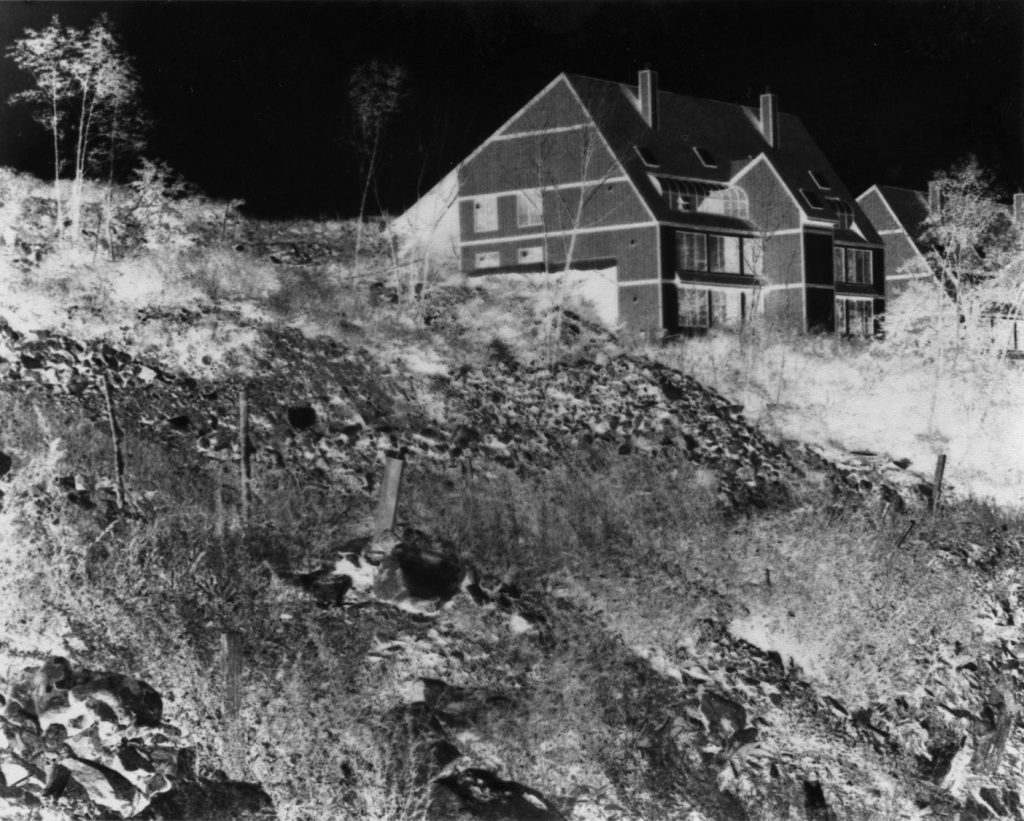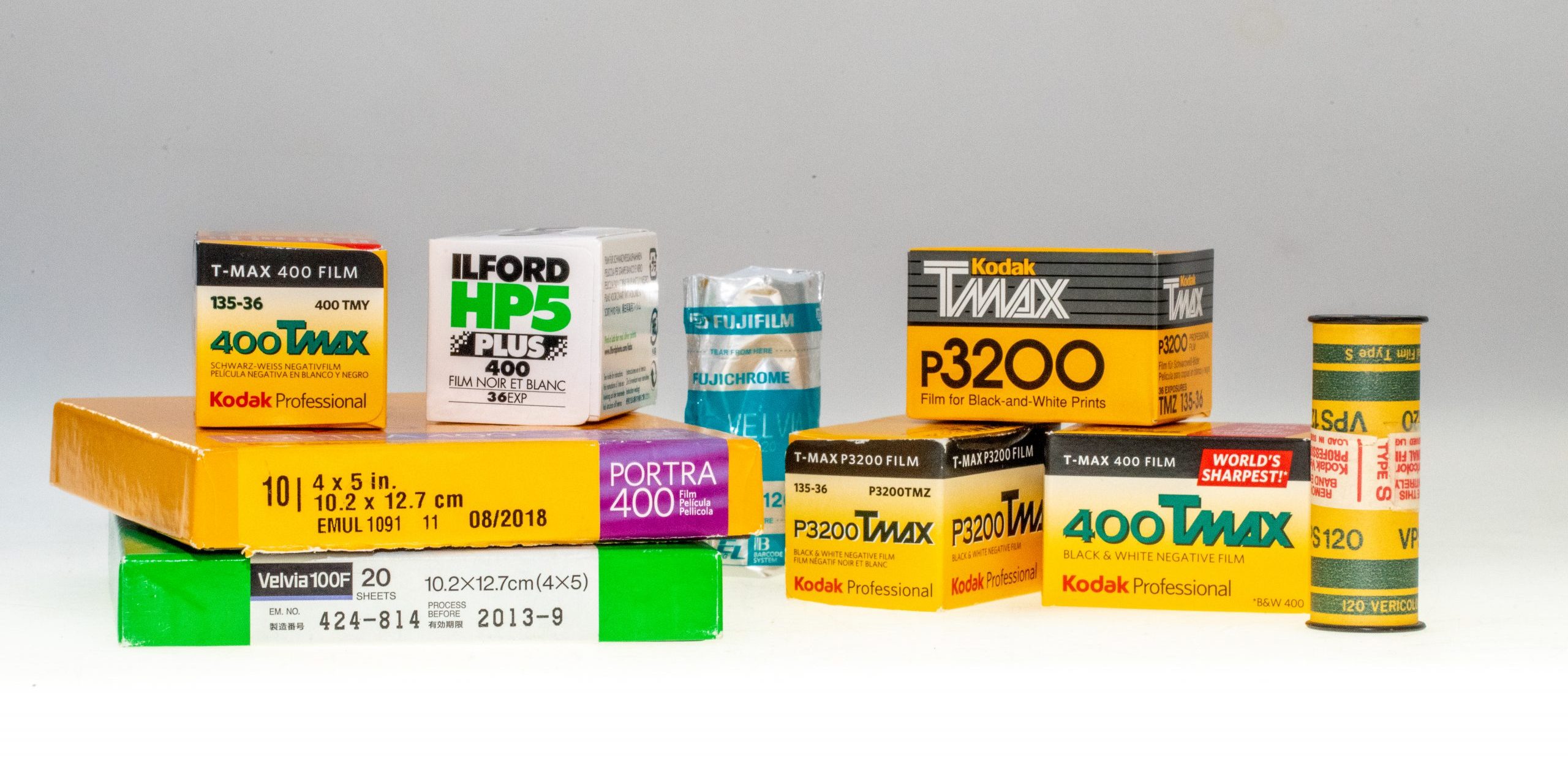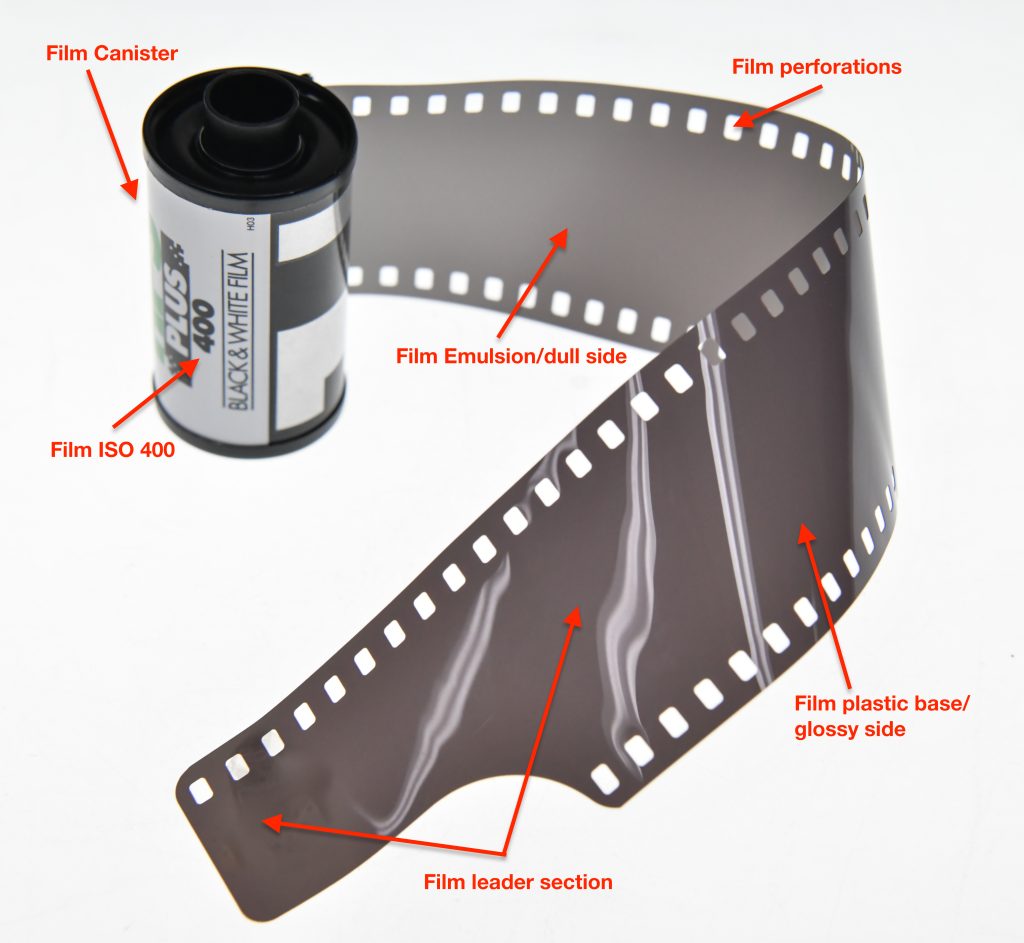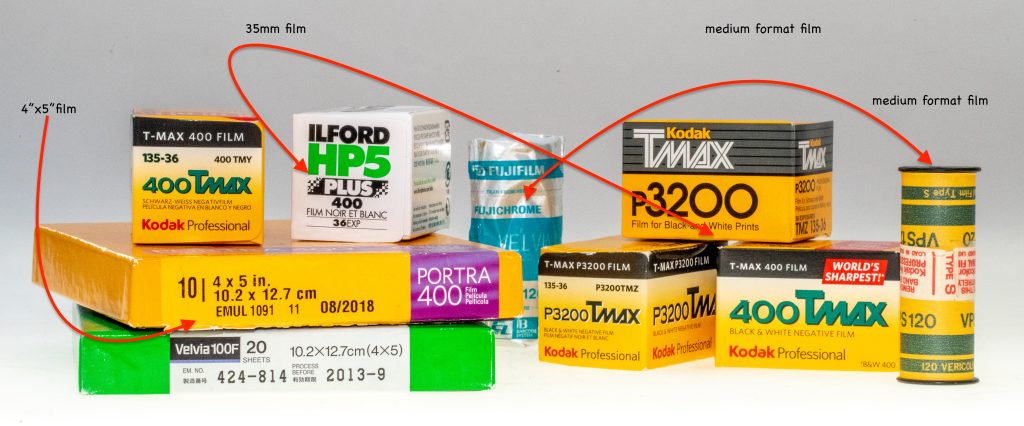10 Film
SNAPSHOT
Definitions, basic concepts, properties, uses, tools, and methods for working with film.
WHAT is film?
Film is a light-sensitive material (plastic base covered with light-sensitive emulsion) that captures light when exposed to it, and it results in a negative or positive image.
Film comes in different types, and sizes.
Basic common types of photographic film are:
- B&W negative film
- Color negative film
- Color reversal film (slide film and transparency film)
Negative film turns into negatives when developed, meaning the gray tones or colors become inverted.
Reversal color film yields positive transparencies (medium and large format) or slides (35mm).
Common Film sizes or formats
- 35mm roll film in a cassette
- Medium Format 6x6mm or 2 1/4x 21/4 in roll film
- Large format 4×5″ sheet film



Film speed or film sensitivity to light
Film speed refers to how fast or slow films react to light. It is measured in ISO or ASA or Din are systems for rating film sensitivity. We will be using ISO which is today’s standard term.
The higher the number the more sensitive to light. Every box of the film is clearly marked.
Common ISO ratings 32, 64, 100, 125*, 200, 400*, 800, 1600*, 3200*.
* B&W films available 125, 400, 1600 ISO.
*400 ISO good choice for beginners. It accommodates bright sunny days, cloudy days, and early afternoon low light conditions.
Film characteristics:
- Grain: The lower the ISO the less grainy the image is
- Contrast: varies depending on the brand
- Tones: some films lean towards warm tone and others cool tone
How does film record an image
We are using film to capture an image with our camera.
Every film consists of a plastic base onto which a gelatin emulsion is applied by the manufacturer. Mixed into the gelatin emulsion are the sensitive-to-light particals called silver halide crystals. The silver halides react to light when exposed to it. The image formed on the film at this point is invisible and is called latent image . The action of the light onto the film becomes visible only when we treat the film with chemicals, a process we call film developing.
A 35mm camera, stores the film safely from being exposed to light and allows us to expose one frame at a time.
Since film is sensitive to light, we need to protect it from any accidental exposure to light until we are ready to take a picture. We are ready to take a picture when the film is safely loaded into our camera. To facilitate this and make it possible to load the film in the camera in daylight, 35mm film comes in a roll held on a spool and is enclosed in a metal canister which protects it from any accidental exposure.
FAQ
Q. Why does my film counter say I shot 36 pictures, but I can still take more pictures?
A. Most likely you didn’t advance to frame ‘one’ when you loaded your film. It happens often, and it is not a problem. Enjoy the extra frame. 🙂
Q. I have an electronic camera. Why are quotation marks after some of the shutter speeds?
A. Electronic cameras let you know that number you chose is a whole number, not a fraction by putting quotation marks after the number. for example, 30″ means 30 seconds, while 30 means 1/30th of a second.
Q. Why isn’t the film advance lever on my camera letting me advance the film?
A. There are several answers to this question, but not all of them will make you happy:
1- You came to the end of the roll, now remember to push the film release button, usually on the bottom of the camera, and rewind your film.
2- The film wasn’t loaded correctly and got jammed in the camera. You will have to get into a completely dark room, open the camera, remove the film and load it onto a reel and put it into a developing tank.
3- The spring on the lever broke, you need to bring this to a camera repair shop. Get an estimate before you have them do the work, sometimes the cost to fix it is more than what you paid for the camera.
Q. Why is it so hard to rewind the film?
A. You forgot to push the film release button before you started rewinding.
Q. The light meter in my camera doesn’t work, Do I need to get it fixed?
A. NO, having a light meter in your camera is convenient, but not necessary to take pictures. check the chapter Your light meter doesn’t work. Now what?
Q. My little brother dropped my camera and the camera back opened. What should I do?
A. Refrain from hurting him, and find a better place to keep your camera. I suggest around your neck 🙂 Throw that rollout and never think of it.
A light sensitive layer on film that contains one or more silver halides and captures an image when exposed to light.
NEGATIVE FILM: Captures images as a “negative”, in which colors and values are inverted.
REVERSAL FILM: Also known as “slide film” when it refers to 35mm, captures images as a “positive”, replicating color and values directly.
Silver halide crystals are light-sensitive chemicals. They are mixed in the film emulsion to make photographic film and paper react to light
An image on an exposed film or print that has not yet been made visible. Only after development in chemicals, it becomes visible







